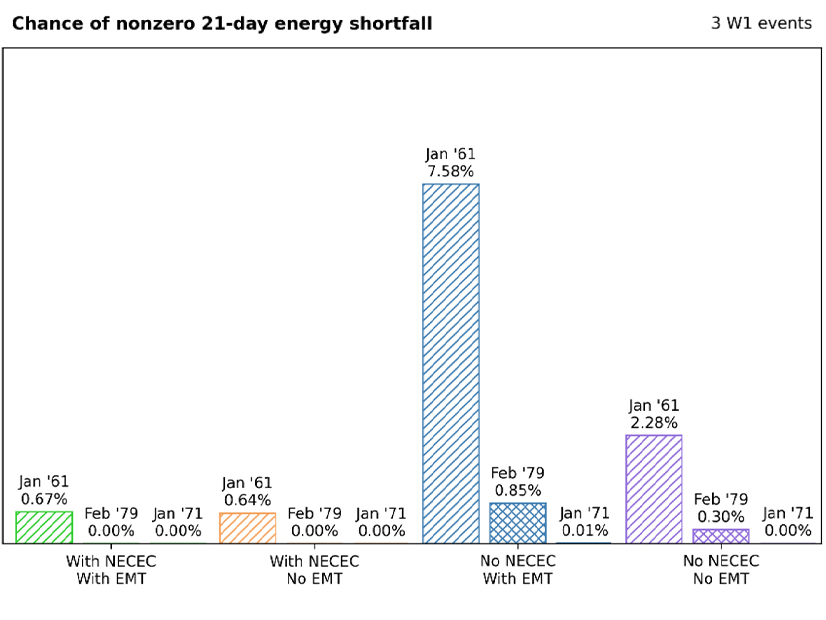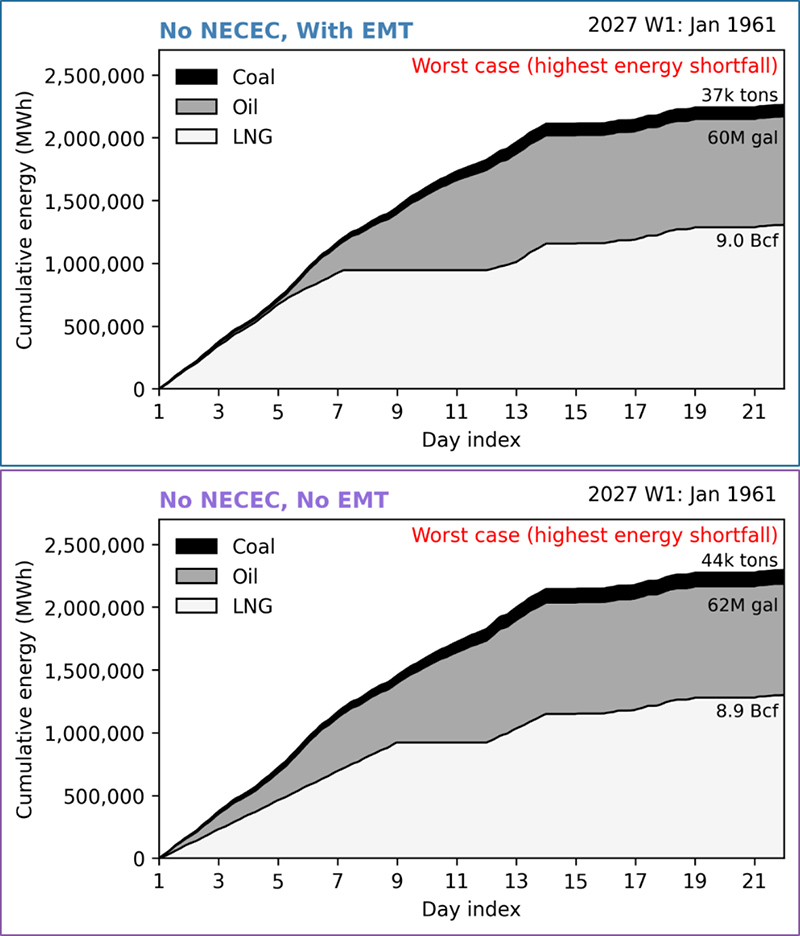
WESTBOROUGH, Mass. — The preliminary results of a joint study by ISO-NE and the Electric Power Research Institute (EPRI) found that the risks of a supply shortfall in ISO-NE during extreme winter weather events are “manageable” through 2027, even without the Everett Marine Terminal and the New England Clean Energy Connect (NECEC) transmission line in service.
But the results also showed that while shortfall risks were similar with or without Everett because of counterbalancing factors, scenarios with the NECEC in service consistently showed less energy adequacy risk, as well as decreased magnitude of the shortfall when it did occur.
ISO-NE presented the results, focused on the projected impacts of extreme weather on grid reliability in the winter of 2027, to the NEPOOL Reliability Committee on Tuesday. The study is part of a larger project with EPRI looking at historical and projected extreme weather events in New England and modeling the risks these events pose to energy infrastructure and grid reliability.
The modeling assessed reliability both with and without Everett and the NECEC, two major sources of uncertainty for the region’s 2027 energy mix.
“In the near term, the energy shortfall risk appears manageable,” said Stephen George, director of operational performance, training and integration for ISO-NE. “The risks are mitigated by incremental imports from New England Clean Energy Connect.”
The research team produced the results from a series of severe weather scenarios based on historical data going back to 1950, adjusted for 2027 based on five climate models and two emissions pathways. For each modeled event, the analysts looked at 21-day energy analysis results from 720 individual cases that differed based on variables including forced outages, LNG inventory, fuel oil inventory, imports and fuel prices.
 Expected energy from stored fuels used in a long-duration severe cold-weather scenario, with and without NECEC and EMT | ISO-NE
Expected energy from stored fuels used in a long-duration severe cold-weather scenario, with and without NECEC and EMT | ISO-NE
In the weather scenario with the highest average system risk — modeled after an extreme cold stretch in the winter of 1961, the coldest 21-day period since 1950 — the probability of an energy shortfall ranged from 0.64% (with the NECEC and without Everett) to 7.6% (without the NECEC and with Everett).
ISO-NE noted that some scenarios with the Everett terminal in service are projected to have increased shortfall margins and risks because of faster depletion of LNG. Scenarios without the Everett terminal projected an increase in burning fuel oil and coal.
George highlighted how this model could be built upon and refined to look at future reliability scenarios.
“This energy adequacy study framework provides a much-needed foundation to study the system as it continues to evolve,” George said. “The ISO will continually monitor the energy adequacy risk, particularly as the changes in the regional supply and demand profiles ramp up.”
The RTO a year ago presented the findings of EPRI’s extreme weather modeling, which were used as an input to produce the study results.
This earlier portion of the study found that the frequency of extreme heat has increased over the past century, while extreme cold has decreased. The study defined extreme heat as daily maximum temperatures above the 95th percentile and extreme cold as daily minimum temperatures below the 5th percentile.
The study also noted that in general, winter temperatures have increased faster than summer temperatures, though cold extremes remain more common than heat extremes.
EPRI projected that these trends will continue in the coming decades, accompanied by a modest increase in precipitation. Wind speeds also are projected to increase in some locations. The study found that scenarios with higher emissions would amplify warming trends, with impacts differentiating for extreme cold around 2040 and for extreme heat around 2050.
George said the RTO will continue to assess the outputs of the 2027 winter study. The organization is also working on projections for the summer of 2027, as well as for the summer and winter of 2032. It hopes to present the results for summer 2027 prior to FERC’s New England Winter Gas-Electric Forum on June 20.
